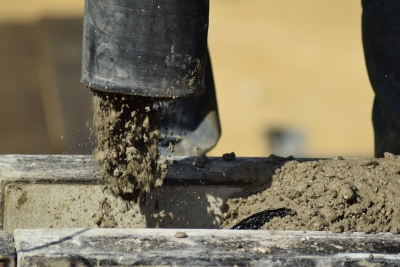Many homeowners throughout Missouri think that laying and leveling are the most complex parts of a concrete pour. However, DIYer’s with experience installing concrete know that calculating concrete volume without over-ordering is arguably the most important factor of the entire project.
Today, we’ll take a look at how you can quickly calculate the amount of ready-mix needed for your upcoming project using our free concrete volume calculator.
Ordering Concrete – The Basics of Getting Started
Jefferson County ready-mix concrete must be ordered in cubic yards, not feet.
Because the calculation for finding cubic yards varies according to the shape of the space being poured, you’ll need to have a clear understanding of the type of structures being installed before that space can be measured.
Before calculating the volume of ready-mix needed for your project, take note of:
-
The number of walls included in your project. This should include 5-10 foot retaining walls and separation walls for garden planters. If your project calls for a retaining wall over 10 feet tall, we recommend working with a professional contractor.
-
The number of flatwork structures used in your project. The term “flatwork” refers to a level surface that shaped as a rectangle or square. This specifically includes:
-
Patios
-
Walkways
-
Sidewalks
-
Building foundations
-
Driveways
-
-
The number of caissons and columns used in your project. Circular structures require a different mathematical formula than flatwork. To ensure you order enough concrete to fill the depth of vertical structures, record the number of caissons and columns separately.
Getting Ready to Calculate Concrete Volume
Once you’ve documented the type and quantity of the structures being poured, it’s time to collect their dimensions.
For Walls and Flatwork:
To calculate the cubic yards of concrete needed for your project, you’ll need to measure the dimensions of the area being poured. For walls and flatwork, measure the following dimensions in feet, not inches.
-
Length
-
Width
-
Depth
Once you have these dimensions on hand, enter them into our free volume calculator to find the number of cubic yards needed for your project.
For Caissons and Columns:
Because caissons and columns are circular structures, the calculation to find the number of cubic feet needed is slightly different than that of flatwork. Before running the calculations, you’ll need the following dimensions (in feet) for each individual caisson or column:
-
Diameter
-
Depth
Ordering Ready-Mix for Multiple Structures
If your project consists of more than one structure (i.e. a walkway and a driveway), use the following steps to calculate the concrete volume needed for your entire project.
-
Calculate the number of cubic feet needed for each individual component.
-
Add the total cubic feet needed for each individual structure together.
Many people throughout Jefferson County believe that laying and leveling ready-mix concrete is the hardest part of a concrete pour, but experienced homeowners agree that ordering the right amount of concrete is the most difficult part of the entire project. By measuring your structures carefully before calculating cubic feet, you can get a more accurate calculation and prevent over and under-ordering.


